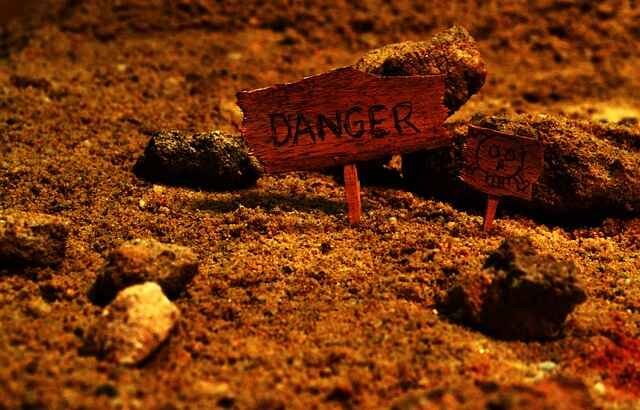Hazard Identification and Risk Analysis (HIRA): A Structured Approach to Identifying and Mitigating Risks
Hazard Identification and Risk Analysis (HIRA) is a structured and systematic approach to identifying potential hazards, assessing their associated risks based on their likelihood and severity, and prioritizing mitigation efforts. It is a widely used risk assessment technique that is particularly well-suited for complex systems or processes.
It’s a fundamental process in risk management, aiming to prevent accidents and incidents by proactively recognizing potential threats and evaluating their impacts.
Explaining Hazard Identification:
Hazard Identification and Risk Analysis involves identifying sources or situations that have the potential to cause harm, damage, or adverse effects to people, property, or the environment. This phase encompasses recognizing various hazards, from physical to chemical, biological, ergonomic, and psychosocial.
HIRA Process
The HIRA process typically follows these steps:
- Define the Scope: Clearly define the scope of the analysis, including the specific system, process, or product to be analyzed.
- Establish the Criteria: Identify the criteria for identifying and assessing risks. This could include factors such as severity, likelihood, and impact.
- Identify Hazards: Use a brainstorming session or checklist to identify potential hazards.
- Evaluate the Severity of Consequences: Assess the severity of the potential consequences of each hazard. This could be done using a qualitative or quantitative approach.
- Estimate the Likelihood of the Hazards Occurring: Assess the likelihood of each hazard occurring. This could be done using a qualitative or quantitative approach.
- Calculate the Risk Priority Number (RPN): Multiply the severity rating by the likelihood rating to calculate the RPN for each hazard.
- Prioritize the Hazards: Prioritize the hazards based on their RPN.
- Identify and Implement Control Measures: Identify control measures to mitigate the risks associated with the prioritized hazards.
- Monitor and Review: Monitor the effectiveness of the implemented control measures and review the HIRA as needed.
Steps in HIRA:
- Identification: Recognize potential hazards, considering the environment, equipment, processes, and human factors.
- Risk Assessment: Evaluate the identified hazards by considering their likelihood and potential impact.
- Risk Prioritization: Rank risks based on severity and probability to prioritize mitigation efforts.
- Mitigation Planning: Develop strategies to eliminate or minimize risks, considering controls, safety measures, and protocols.
- Review and Update: Regularly reassess and update the HIRA process to address new hazards or changes in the environment.
Risk Analysis in HIRA:
Risk analysis evaluates the identified hazards by assessing their probability of occurrence and the severity of their potential consequences. The aim is to quantify and prioritize risks to determine the most critical areas that need attention.
Formula for Risk Calculation:
- The general formula for risk calculation can be expressed as:Risk=Probability of an Event×Consequences of the Event
Example Calculation:
- Let’s consider a workplace where there’s a risk of electrical shock. If the probability of exposure to this hazard is assessed at 0.3 (on a scale of 0 to 1), and the potential consequences are rated as 9 (on a scale of 1 to 10), the risk would be 0.3×9=2.7.
This indicates a relatively high-risk scenario that requires mitigation measures.
HIRA Formula and Calculations
The HIRA process typically utilizes the Risk Priority Number (RPN) to quantify the overall risk associated with each hazard.
The RPN is calculated by multiplying the severity rating by the likelihood rating:
RPN = Severity Rating x Likelihood Rating
The severity rating is an assessment of the potential consequences of a hazard. It is typically rated on a scale of 1 to 10, with 1 being the lowest severity and 10 being the highest severity.
The likelihood rating is an assessment of the likelihood of a hazard occurring. It is typically rated on a scale of 1 to 10, with 1 being the lowest likelihood and 10 being the highest likelihood.
The higher the RPN, the higher the overall risk associated with the hazard.
Calculations Examples
Suppose a company is developing a new software application. During a HIRA, the following hazards are identified:
- Data Incorrectly Imported: The new software might not correctly import data from existing systems, leading to data discrepancies and potential losses.
- Data Corruption During Processing: The software might corrupt data during processing, rendering it unusable.
- Data Loss During Storage: The software might not properly store data, leading to data loss or corruption.
- Data Unauthorized Access: The software might be vulnerable to unauthorized access, allowing malicious actors to steal or modify data.
- Data Retention Issues: The software might not properly manage data retention policies, leading to data retention violations or data being purged prematurely.
Using a qualitative or quantitative approach, the severity and likelihood ratings of each hazard can be assessed. For example, the severity of data loss during storage might be rated as high, as it could lead to significant financial losses and reputational damage. The likelihood of data loss during storage might be rated as moderate, as it depends on various factors such as the implemented security measures and the user’s behavior.
Example 1:
The RPNs for each hazard can then be calculated. For example, the RPN for data loss during storage might be calculated as:
RPN = 5 x 3 = 15
This indicates that data loss during storage is a moderate-risk hazard.
Example 2:
Consider a manufacturing company that is developing a new piece of equipment. During a HIRA, the following hazard is identified:
Hazard: The new equipment might malfunction, leading to product defects and potential injuries to workers.
Severity Rating:
- High: Product defects could lead to customer dissatisfaction, product recalls, and financial losses.
- High: Injuries to workers could lead to worker compensation claims, legal expenses, and damage to the company’s reputation.
Likelihood Rating:
- Moderate: The likelihood of the equipment malfunctioning depends on various factors such as the quality of design and manufacturing, the proper installation and maintenance of the equipment, and the training of workers.
- Moderate: The likelihood of injuries to workers depends on various factors such as the safety features of the equipment, the adherence to safety procedures, and the vigilance of workers.
RPN Calculation:
- Severity Rating: 5
- Likelihood Rating: 3
- RPN: 5 x 3 = 15
Example 3:
Consider a pharmaceutical company that is developing a new drug. During a HIRA, the following hazard is identified:
Hazard: The new drug might cause serious adverse events in some patients.
Severity Rating:
- High: Serious adverse events could lead to hospitalization, disability, or even death.
- High: Serious adverse events could damage the company’s reputation and lead to legal action.
Likelihood Rating:
- Low: The likelihood of a serious adverse event depends on various factors such as the safety profile of the drug, the targeted patient population, and the proper labeling and warnings.
- Low: The likelihood of a serious adverse event depends on the proper manufacturing and quality control of the drug, the proper prescribing and dispensing practices, and the monitoring of patients for adverse events.
RPN Calculation:
- Severity Rating: 5
- Likelihood Rating: 2
- RPN: 5 x 2 = 10
Example 4:
Consider a bank that is developing a new online banking application. During a HIRA, the following hazard is identified:
Hazard: The new application might be vulnerable to cyberattacks, leading to unauthorized access to customer accounts and financial losses.
Severity Rating:
- High: Unauthorized access to customer accounts could lead to theft of money, identity theft, and financial hardship for customers.
- High: Reputational damage could lead to loss of customer trust, regulatory fines, and legal action against the bank.
Likelihood Rating:
- Moderate: The likelihood of a cyberattack depends on various factors such as the sophistication of the application’s security measures, the effectiveness of the bank’s cybersecurity defenses, and the attacker’s capabilities.
- Moderate: The likelihood of a cyberattack depends on the bank’s awareness of cybersecurity threats, its ability to detect and respond to attacks, and its adherence to cybersecurity best practices.
RPN Calculation:
- Severity Rating: 5
- Likelihood Rating: 3
- RPN: 5 x 3 = 15
These examples illustrate how HIRA can be used to quantify the overall risk associated with each hazard. By identifying the root causes of hazards and prioritizing them based on their RPN, organizations can focus their mitigation efforts on the most critical risks.
Example 5
Let’s consider a manufacturing facility that produces electronic components. The company wants to assess the risks associated with a particular production line to enhance safety measures.
Step 1: Hazard Identification
- Identify Potential Hazards: The team conducting the HIRA identifies potential hazards. For this example, let’s consider a hazard: “Equipment malfunction leading to an electrical fire.”
Step 2: Risk Assessment
- Determine Severity (S): Rate the severity of the hazard on a scale from 1 to 10 (1 being the least severe and 10 being the most severe). Let’s assign it a severity rating of 8, considering the potential damage and impact.
- Estimate Likelihood (L): Assess the likelihood of the hazard occurring on a scale from 1 to 10 (1 being the least likely and 10 being the most likely). Let’s say the likelihood of this equipment malfunction causing an electrical fire is estimated at 6.
- Calculate Risk (R): Multiply Severity (S) by Likelihood (L) to determine the Risk Rating (R).For the given hazard:Risk = Severity (S) × Likelihood (L)
Risk = 8 (S) × 6 (L) = 48
Step 3: Risk Control and Mitigation
- Implement Control Measures: The team devises control measures to mitigate this risk. This might include regular equipment maintenance, installing fire suppression systems, and employee training on fire safety protocols.
Step 4: Reassessing Risk
- Re-evaluate Risk After Controls: After implementing the control measures, reassess the risk. If the measures reduce the likelihood or severity, the risk rating may decrease. For instance, let’s assume after implementing measures, the likelihood reduces to 4.Revised Risk = Severity (S) × Likelihood (L)Revised Risk = 8 (S) × 4 (L) = 32
The HIRA process allows organizations to identify potential hazards, assess associated risks, and implement measures to mitigate those risks. In this example, the initial risk rating was 48, but after implementing control measures, the risk reduced to 32, signifying an improvement in risk management.
This comprehensive evaluation equips companies to make informed decisions, allocate resources effectively, and enhance workplace safety.
Conclusion
The HIRA process allows organizations to identify potential hazards, assess associated risks, and implement measures to mitigate those risks. In this example, the initial risk rating was 48, but after implementing control measures, the risk reduced to 32, signifying an improvement in risk management.
This comprehensive evaluation equips companies to make informed decisions, allocate resources effectively, and enhance workplace safety.
HIRA is a valuable tool for organizations of all sizes to identify, assess, and mitigate potential risks. By following a structured approach and utilizing the RPN, organizations can prioritize risks and implement effective mitigation strategies to safeguard their operations and assets.
This article gives a comprehensive overview of Hazard Identification and Risk Analysis (HIRA), its importance, the risk assessment formula, and an example calculation to illustrate its application in risk management. By systematically identifying hazards, assessing risks, and implementing mitigation strategies, businesses can proactively minimize risks and prevent potential accidents or incidents.
Photo credit: Ramdlon via Pixabay
Risk Assessment Techniques | Identifying, Assessing, and Mitigating Risks with Proven Techniques



